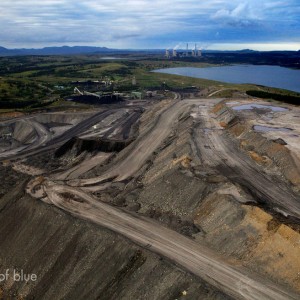Federal Water Tap, April 23: Clean Water Act
Clean Water Act Interpretation
The Obama administration is mulling regulatory guidance for the Clean Water Act that would reinstate language that was proposed by the George W. Bush administration, but was stymied by opposition from industry groups. Greenwire reports that the new guidance would make a broader claim as to which wetlands and small streams are protected under the nation’s landmark legislation for water quality.
Federal water regulations have been in a state of confusion since a 2006 U.S. Supreme Court decision did not produce a majority opinion clarifying what qualifies as a wetland or as “navigable waters” under the Clean Water Act.
Water Supply
The Bureau of Reclamation gave out a $10 million pipeline construction contract, the first of many for a billion dollar water project in northwestern New Mexico. The Navajo-Gallup Water Supply project will deliver water to the Navajo Nation and other towns through 280 miles of pipeline. It was one of 14 projects that the Obama administration put on the “fast-track” for regulatory approval last October.
The bureau also awarded US$2.4 million for supply and demand studies in five river basins in the western U.S.: the Los Angeles Basin in California; the Pecos River Basin in New Mexico; the Republican River Basin in Colorado, Kansas and Nebraska; the Sacramento-San Joaquin River Basins in California and the Upper Washita River Basin in Oklahoma.
Rising Seas, Flooded Coasts
On April 19, the Senate Committee on Energy and Natural Resources convened to discuss sea level rise and its effect on infrastructure. Witnesses included NASA’s chief scientist, a representative from the New York City mayor’s office, and several researchers.
Adam Freed, the deputy director of long-term planning and sustainability for New York City, urged the committee to continue federal funding for local climate change adaptation and to allow regulatory flexibility in the face of new environmental circumstances.
Dam Renovation
The Bureau of Reclamation will renovate some of the generating units at Washington state’s Grand Coulee Dam, the facility that is tops in the nation for producing hydroelectric power. The Associated Press reports that the bureau hopes the modern controls will boost power capacity by 240 megawatts. Current capacity is 6,800 megawatts.
Farm Bill
The House Agriculture Committee continues its work on the 2012 version of the Farm Bill, the gargantuan piece of legislation that comes up for renewal roughly every five years and covers land use, farm subsidies, crop insurance, and nutrition programs, among many other things.
Last week, the committee completed its field hearings. This week, several subcommittees will work through aspects of the bill during hearings in D.C.
Federal Water Tap is a weekly digest spotting trends in U.S. government water policy. To get more water news, follow Circle of Blue on Twitter and sign up for our newsletter.
Brett writes about agriculture, energy, infrastructure, and the politics and economics of water in the United States. He also writes the Federal Water Tap, Circle of Blue’s weekly digest of U.S. government water news. He is the winner of two Society of Environmental Journalists reporting awards, one of the top honors in American environmental journalism: first place for explanatory reporting for a series on septic system pollution in the United States(2016) and third place for beat reporting in a small market (2014). He received the Sierra Club’s Distinguished Service Award in 2018. Brett lives in Seattle, where he hikes the mountains and bakes pies. Contact Brett Walton





The goal of the Clean Water Act was to eliminate all water pollution by 1985, but when EPA implemented the Act by setting sewage treatment standards, it used an essential pollution test incorrectly an ignored 60% of the pollution in sewage Congress intended to ‘treat’. Among this waste was and still is all the nitrogenous (urine and protein) waste, while this waste besides exerting an oxygen demand (like fecal waste) also is a fertilizer for algae, thus contributes to dead zones, now mostly blamed on the runoffs from farms and cities.
EPA in 1983 acknowledged the problems caused by this test, but never corrected the test, as it considered correcting this test and regulations impossible, because it would require a re-education and even re-tooling of an entire industry. This apparently still is the reason why this essential test can not be corrected, why we still use our open waters as urinals and still do not know how sewage is really treated and what the effluent waste loading is on receiving water bodies. And all that because of a faulty applied pollution test.